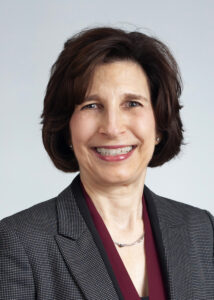Dr. Bolster pointed out that the pandemic “made it even clearer that we need to provide curricular design to strengthen the achievement of competency for our fellows to participate in telehealth.”
Some providers have advocated for telehealth for years, partly to increase patients’ access to rheumatic care, particularly in rural or under-resourced areas, where providers may be scarce. A 2015 ACR workforce study projected that by 2030, demand for rheumatology providers will exceed supply by over 100%, due to multiple factors.4 Dr. Kolfenbach, associate professor at the University of Colorado Anschutz Medical Campus, Aurora, Colo., and medical director of the rheumatology fellowship program in became interested in telemedicine even before the pandemic, partly spurred by the need to bring rheumatology care to remote and underserved regions (e.g., rural areas of Colorado and Wyoming). “I think video visits are a great way for an individual patient to be served when they have to drive two hours away for a visit; it saves them time and resources,” he said.
Although virtual telerheumatology visits can play an important role in extending the reach of rheumatologists in some contexts, they do not directly increase the number of providers who can deliver rheumatology care. So they have limited capacity to meet the demand for more rheumatology clinicians.
Dr. Kolfenbach said e-consults may be an important way to help fill that gap. “Through e-consults, we can bring rheumatologic expertise to a local provider, [offering advice] on how to manage some conditions,” he said. “If we get an e-consult for gout, that same primary care doctor might then be able to apply the instruction we provide to a different patient the next time. You are able to touch even more people.”
However, Dr. Kolfenbach noted that among medical providers, e-consults are not as widely accepted as remote clinical videoconferencing visits. Through one aspect of his current project, he hopes to demonstrate that e-consults can be done safely and that they can provide healthcare savings while benefiting both patients and primary care providers. This may be especially helpful to provide reassurance to patients and guidance to primary care providers when an in-person rheumatology visit may not be necessary.
“These services provide a lifeline for communities where there isn’t a rheumatologist around,” he said.
To build her project, Dr. Bolster used a preexisting relationship between Massachusetts General Hospital, Boston, and the Rosebud Sioux Tribe on the Rosebud Indian Reservation (Indian Health Service) in South Dakota, an area without on-site rheumatology care. One component used a format similar to project ECHO (Extension for Community Healthcare Outcomes), first developed in 2003 to use virtual collaboration and case-based learning to give specialist training to primary care providers.5




